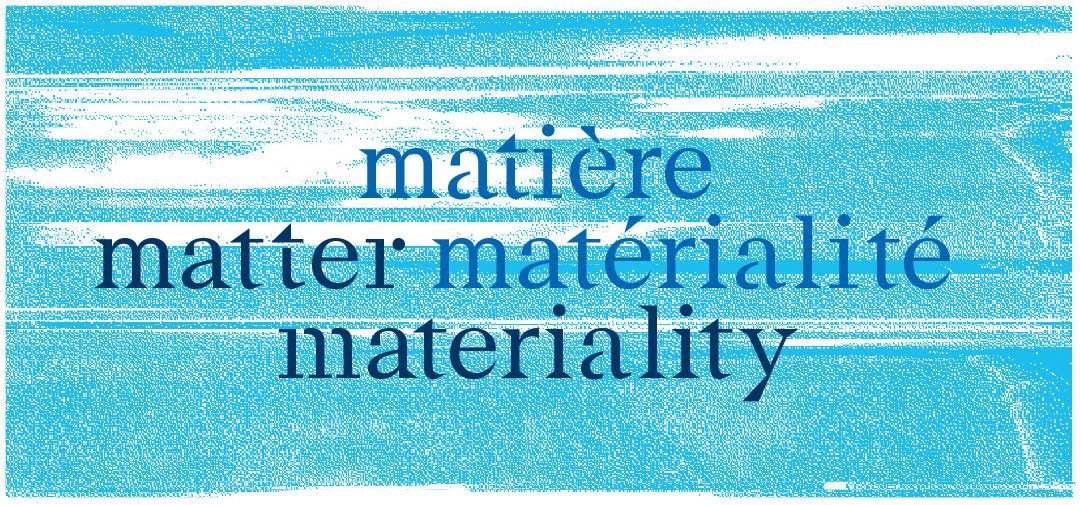Le Comité international d’histoire de l’art (CIHA) est le plus ancien organisme international d’histoire de l’art. Le CIHA organise depuis presque un siècle, tous les quatre ans, un grand Congrès international d’histoire de l’art, qui représente l'état de l'histoire de l'art dans le monde et qui est ouvert à toutes les nationalités.
Publié le 26 septembre 2022 -
Organisé en partenariat entre le Comité français d’histoire de l’art (CFHA), l’Institut national d’histoire de l’art (INHA) et le Laboratoire de recherche historique Rhône-Alpes (LARHRA), le congrès de 2024 se déroulera à Lyon sur le thème Matière Matérialité.
Matière et matérialité sont inhérentes à la conception, à la production et à l'interprétation des artefacts dans toutes les cultures et à toutes les époques. Ces dernières décennies, ces notions ont donné lieu à plusieurs remises en cause théoriques dont la remise en question du modèle hylémorphique (opposition forme/matière). Il s’agit désormais d’appréhender la matière non plus comme une réalité inerte, mais comme une réalité en prise à des transformations infinies, un monde de flux (G. Deleuze, T. Ingold) et dotée d'agentivité (J. Bennett).
La matérialité résultant de l'effet produit par les propriétés de la matière est appréhendée au sein d'environnements et de contextes de réception qui sont également changeants et n'ont rien de fixe ou de définitif. Ces propriétés se manifestent à travers des effets de textures, de surfaces, de poids, d’extension dans l’espace, de formats, de traces gestuelles... Le concept de matérialité renvoie donc au fait que les artefacts visuels sont composés de matériaux. Il prend en compte tous les processus – techniques, culturels et sociaux – qui sous-tendent la réalisation et la perception matérielle des œuvres d'art.
C'est dans cet esprit que s'inscrit le thème choisi pour le 36e congrès du CIHA. Ce thème offre ainsi l'occasion d'un dialogue interculturel et interdisciplinaire fructueux sur des questions qui favorisent une perspective transversale à l'intersection des approches et des méthodologies.
Pour en savoir plus sur le congrès, consultez le site internet :
https://www.cihalyon2024.fr/fr/
Pour prendre connaissance du texte complet de l'appel à sessions et pour soumettre vos propositions :
Plateforme de l’appel à sessions
Un appel à communications pour les sessions sera lancé au printemps 2023.
--------------------------------------
The
CIHA (Comité international d'histoire de l'art) is the oldest international organization of art history in the world. For almost a century, every four years, the CIHA has organized a major International Congress on Art History that represented the state of art history throughout the world and which were and are open to all nationalities. The 2024 congress will take place in Lyon on the theme of Matter Materiality.
Matter and materiality are inherent to the conception, production, and interpretation of artifacts in all cultures across all periods of time. In recent decades these notions have given rise to theoretical reflections, including a rethinking of the hylemorphic model (form/matter opposition). A world is open to us in which matter is no longer fixed and inert but in motion, in the grip of infinite transformations, a world of flux (G. Deleuze, T. Ingold), where vital matter is endowed with agency (J. Bennett).
Materiality, resulting from the effect produced by the properties of matter, is grasped within environments and contexts of reception that are also changing and have nothing fixed or definitive. These properties are manifested through the effects of textures, surfaces, weight, extension in space, format, gestural traces, and material effects... The concept of materiality therefore refers to the fact that the artifacts are composed of materials and, at a theoretical level, to all the processes — technical, cultural and social — that undergird the realization and the material perception of works of art.
It is in this spirit that the theme chosen for the 36th CIHA congress is intended. This theme thus provides an opportunity for fruitful intercultural and interdisciplinary dialogue on questions that promote a transversal perspective at the intersection of approaches and methodologies.
For more information on the congress:
https://www.cihalyon2024.fr/en/
To read the full text of the call for sessions and to submit your proposals:
Call for sessions platform
A call for papers for the sessions will be launched in spring 2023.


